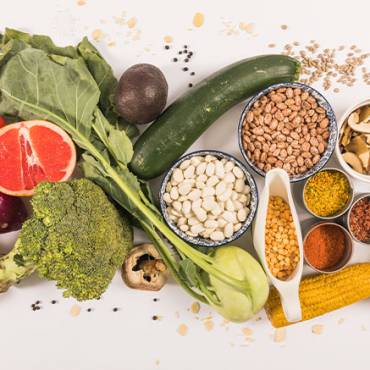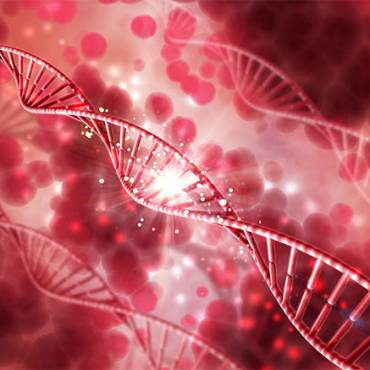Iron deficiency anaemia is a condition where there are few red blood cells in the body due to a shortage of iron.
Anaemia is typically caused by blood loss, but it can also happen due to lack of iron. Even though this is commonly recognised, there are still several widespread myths about anaemia and iron deficiency.
Myth: if you are a vegetarian, then you are more prone to anaemia.
Fact: While non-vegetarian food sources such as red meat, chicken, or fish are a common good source of iron, plant foods such as dark leafy vegetables are an excellent source of iron and nutrients. Vegetarians can utilise the plant sources with combinations that improve iron absorption – and remember, nutrient deficiency is not the only cause of anaemia.
Myth: If you are anaemic means, you are iron-deficient.
Fact: Although iron deficiency is the most common cause of anaemia, it doesn’t mean that iron deficiency and anaemia can always be linked. There are other causes of anaemia, such as anaemia arising out of chronic disease and sickle-cell anaemia. These types of anaemia are not caused by nutritional deficiency. You should always consult the doctor before starting the iron supplementations.
Myth: Children are more likely to suffer from anaemia.
Fact: You can suffer from anaemia at any age. IDA is common among infants and children, but it’s not limited to this age group.
Women of child-bearing age and pregnant women are also susceptible to IDA.
Myth: Anaemia is mostly linked to poor diet.
Fact: While a poor diet is typically a key reason for anaemia in children, some types of anaemia such as sickle-cell anaemia and thalassaemia are not linked to diet and iron intake. In adults, anaemia is often caused by inflammation, kidney disease, infection, cancer or bleeding gastritis.
Myth: Adults or children with anaemia cannot exercise.
Fact: It may be challenging to exercise due to the lack of oxygen caused by the low number of red blood cells and doing any activity may be more strenuous, but there is no negative impact due to physical activity.
Myth: Untreated anaemia can cause leukaemia.
Fact: Although both diseases affect the blood, anaemia does not lead to leukaemia. Anaemia, on the other hand, can be a symptom of leukaemia; when leukaemia cells multiply, there is less room for healthy red blood cells, and anaemia can result when your red blood cell count falls below normal.
[expand title=References]
- Hawk, S, Englehardt, K. and Small, C. Risks of iron deficiency among vegetarian college women. Health, 2012; 4: 113-119. This is distributed under the Creative Commons Attribution 4.0 Unported (CC BY 4.0) license (http://creativecommons.org/licenses/by/4.0). The article has been taken from the (Health), and the content has been modified for its use on the platform. This is attributed to (Susan N. Hawk, Kimberly Grage Englehardt, Cindi Small), and the original version can be found in the link below https://www.scirp.org/journal/paperinformation.aspx?paperid=18325 , Risks of iron deficiency among vegetarian college women. Health, 2012; 4: 113-119.
- Khandelwal S, et al. Infant Young Child Feeding Practices in an Indian Maternal-Childbirth Cohort in Belagavi, Karnataka. Int J Environ Res Public Health. 2022;19(9):5088. This is distributed under the Creative Commons Attribution 4.0 Unported (CC BY) license (https://creativecommons.org/licenses/by/4.0/). The article has been taken from the (International Journal of Environmental Research and Public Health), and the content has been modified for its use on the platform. This is attributed to Khandelwal S, Kondal D, Chakravarti AR, Dutta S, Banerjee B, Chaudhry M, Patil K, Swamy MK, Ramakrishnan U, Prabhakaran D, Tandon N, Stein AD, and the original version can be found in the link below https://www.mdpi.com/1660-4601/19/9/5088/htm , Infant Young Child Feeding Practices in an Indian Maternal-Child Birth Cohort in Belagavi, Karnataka. Int J Environ Res Public Health. 2022;19(9):5088.
- Kumar A, Sharma E, Marley A, et al. Iron deficiency anaemia: pathophysiology, assessment, practical management. BMJ Open Gastro 2022;9(1):e000759. This is distributed under the Creative Commons Attribution Non-Commercial (CC BY-NC 4.0) license http://creativecommons.org/licenses/by-nc/4.0/ . The article has been taken from the (BMJ Open Gastroenterology), and the content has been modified for its use on the platform. This is attributed to Aditi Kumar, Esha Sharma, Alexandra Marley, Mark A Samaan, Matthew James Brookes, and the original version can be found in the link below https://bmjopengastro.bmj.com/content/9/1/e000759.long , Iron deficiency anaemia: pathophysiology, assessment, practical management. BMJ Open Gastro 2022;9(1): e000759.
[/expand]
Disclaimer : This blog is brought to you by Cipla Limited(“Cipla”) for information and awareness purposes. NOT INTENDED AS A SUBSTITUTE FOR PROFESSIONAL MEDICAL ADVICE. Please consult your doctor healthcare professional before starting any treatment/medicine. Cipla shall not be responsible for the contents of this blog or for any opinions expressed or advice shared herein. Cipla makes no representations with respect to the accuracy, completeness, correctness, suitability, or validity of any information mentioned herein, and shall not be responsible for any direct, indirect, consequential, or other damages arising therefrom. The “CIPLA” mark and logo are the sole intellectual property of Cipla Limited. Image/ Characters shown are only for representation.”






